11+ SAMPLE Legal Agreement
-
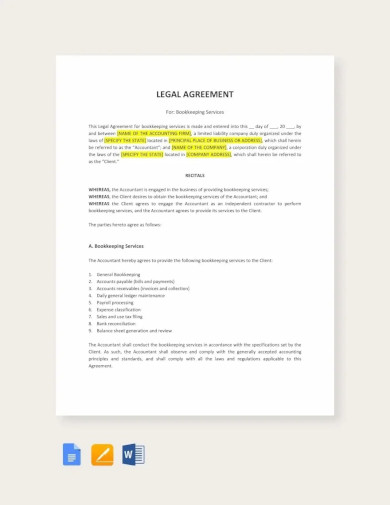
Legal Agreement Template
download now -

Investor Legal Agreement Template
download now -
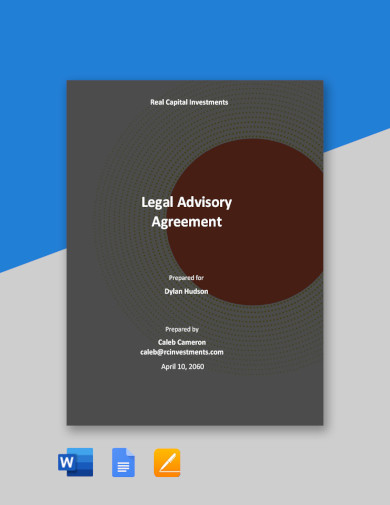
Legal Advisory Agreement Template
download now -
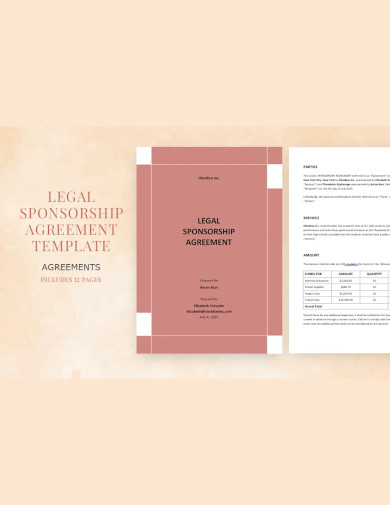
Legal Sponsorship Agreement Template
download now -
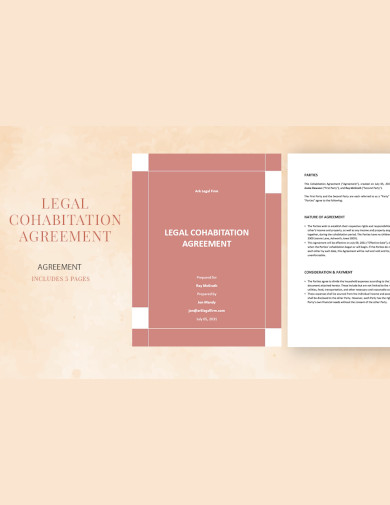
Legal Cohabitation Agreement Template
download now -
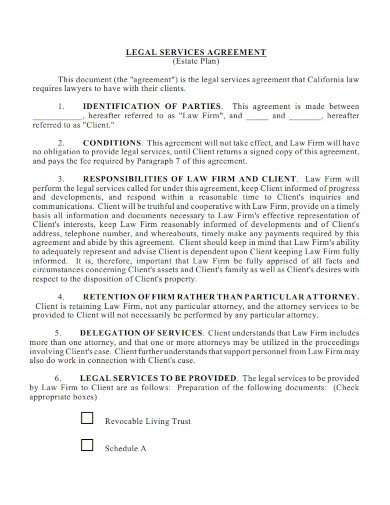
Sample Legal Services Agreement Template
download now -
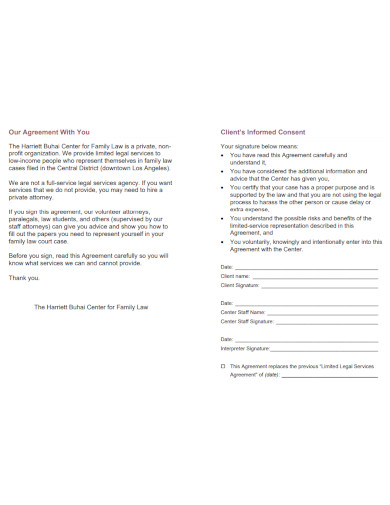
Limited Legal Services Agreement
download now -
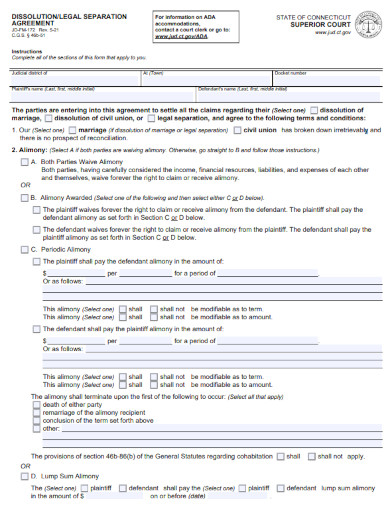
Sample Legal Separation Agreement
download now -
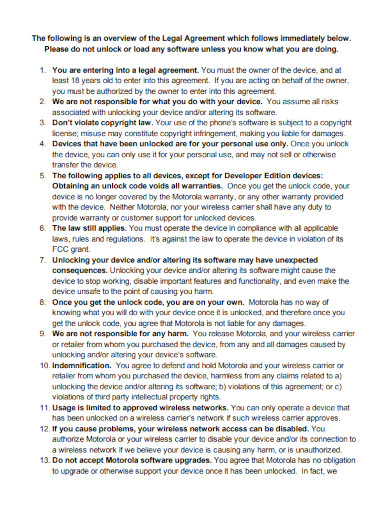
Sample Legal Agreement Template
download now -
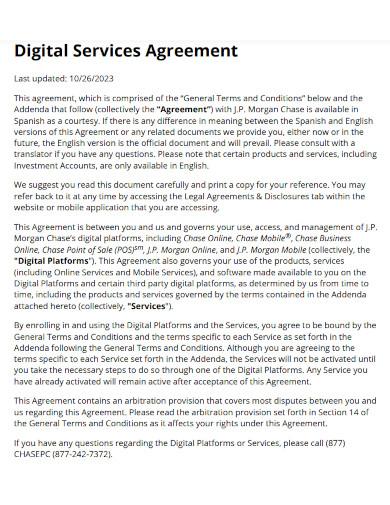
Digital Services Legal Agreement
download now -
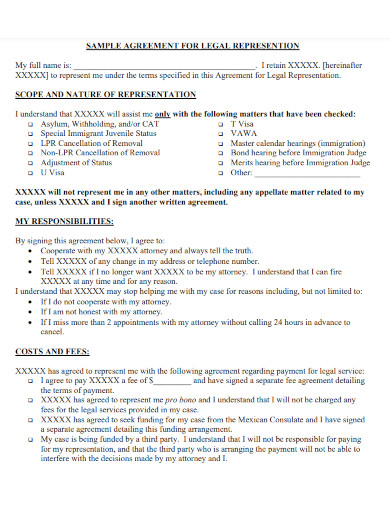
Sample Agreement for Legal Represention
download now -
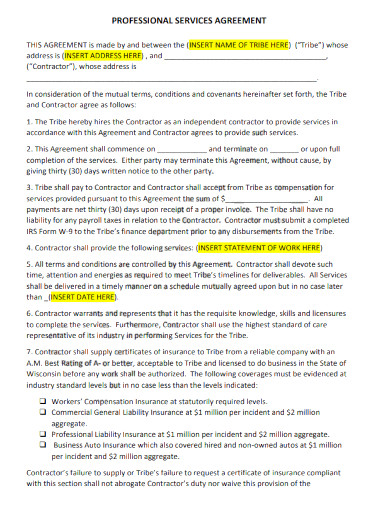
Professional Service Legal Agreement
download now
FREE Legal Agreement s to Download
11+ SAMPLE Legal Agreement
What is Legal Agreement?
What are Legal Agreement Defined Terms?
Can I Make a Legal Agreement?
What Should a Legal Agreement Include?
What is the Example of Agreement?
How do I Terminate a Legal Agreement?
How long is a Legal Agreement Valid?
Can I Modify a Legal Agreement After it’s Been Signed?
What is Legal Agreement?
A legal agreement, often referred to as a legal contract or a binding sample document, is a formal arrangement between two or more parties that defines the terms and conditions under which they agree to interact or conduct business. These blank agreements are crucial in establishing the rights, responsibilities, and obligations of each party involved, providing a clear agreement of framework for their relationship.
Key Components of a Legal Agreement:
1. Identification of Parties:
Clearly specifies the names and roles of all parties entering into the agreement.
2. Offer and Acceptance:
Outlines the offer made by one party and the acceptance of that offer by the other, forming the basis of mutual assent.
3. Intention to Create Legal Relations:
Establishes the intention of the parties to create a legally binding relationship, differentiating it from casual or non-binding agreements.
4. Consideration:
Involves the exchange of something valuable (consideration) between the parties, ensuring a fair and equitable agreement.
5. Legal Purpose:
Ensures that the objectives outlined in the agreement are lawful and do not involve any illegal activities.
6. Terms and Conditions:
Details the specific terms, conditions, and requirements agreed upon by the parties. This section often includes timelines, payment details, and any other relevant specifications.
7. Performance and Delivery:
Describes the expectations regarding the performance of each party’s obligations and the method of delivery of goods or services.
8. Termination and Breach:
Outlines the conditions under which the termination agreement can be terminated and the consequences of any party’s failure to fulfill its obligations (breach).
9. Dispute Resolution:
Specifies the mechanism for resolving disputes, whether through negotiation, mediation, or legal action.
10. Governing Law:
Indicates the jurisdiction and laws that will govern the interpretation and enforcement of the agreement.
Types of Legal Agreements:
1. Business Contracts:
Business Contracts Covering transactions, partnerships, collaborations, and other business-related arrangements.
2. Employment Agreements:
Defining the terms of employment, including roles, responsibilities, and compensation.
3. Real Estate Contracts:
Detailing the terms of property transactions, leases, or rental agreements.
4. Intellectual Property Agreements:
Protecting rights related to inventions, trademarks, copyrights, and trade secrets.
5. Loan Agreements:
Outlining the terms of financial loans, including payment schedules and interest rates.
6. Non-Disclosure Agreements (NDAs):
Protecting confidential information shared between parties.
7. Partnership Agreements:
Establishing the terms of collaboration between business partners.
8. Service Agreements:
Defining the terms under which services will be provided.
What are Legal Agreement Defined Terms?
Defined terms in a legal agreement refer to specific words or phrases within the document that have been given a precise meaning for the purpose of clarity and consistency. These definitions are typically found in a designated section of the agreement, often near the beginning, and are crucial for interpreting the language used throughout the document. By providing explicit meanings for certain terms, the agreement aims to avoid ambiguity and ensure that all parties have a common understanding of key concepts. Here are some common characteristics of defined terms in legal agreements:
1. Location:
Defined terms are usually gathered in a dedicated section of the agreement, often titled “Definitions” or “Interpretation.”
2. Consistency:
Once a term is defined, it should be consistently used throughout the agreement with the same meaning. This promotes clarity and helps prevent misunderstandings.
3. Capitalization:
In many agreements, defined terms are capitalized (e.g., “Agreement,” “Party,” “Effective Date”) to signal to the reader that these terms have specific meanings as outlined in the definitions section.
4. Comprehensive Coverage:
The definitions section aims to cover all terms that may have a specific legal or technical meaning within the context of the agreement.
5. Interconnected Definitions:
Some agreements may have definitions that reference other defined terms, creating an interconnected network of meanings.
6. Technical and Industry-Specific Terms:
Defined terms often include technical or industry-specific terms that may not have the same meaning in everyday language.
7. Abbreviations and Acronyms:
If the agreement uses abbreviations or acronyms, these are often defined to ensure clarity.
8. Savings Clause:
Some agreements include a savings clause, indicating that if a term is used without being defined, it should be interpreted according to its ordinary and generally accepted meaning.
9. Amendments:
The agreement may include a provision specifying how amendments to the definitions section will be made.
Yes, you can create a legal agreement. However, it’s important to approach the process with care to ensure that the agreement is legally sound and enforceable. Here are some general steps to guide you:
1. Identify the Parties:
Clearly identify the parties involved in the agreement. Include their full legal names and any relevant details that uniquely identify them.
2. Define the Terms:
Clearly define the terms and conditions of the agreement. Be specific about the rights, responsibilities, and obligations of each party.
3. Include Consideration:
Ensure that there is an exchange of something valuable (consideration) between the parties. This is a key element in forming a legally binding contract.
4. Be Clear and Concise:
Use clear and straightforward language. Avoid ambiguity to prevent potential disputes.
5. Include Relevant Details:
Depending on the type of agreement, include details such as payment terms, delivery schedules, responsibilities of each party, and any other specific terms that are relevant to the agreement.
6. Consider Legal Requirements:
Be aware of any legal requirements or regulations that may apply to the type of agreement you’re creating. Certain agreements may need to meet specific legal standards.
7. Use Defined Terms:
Consider including a section with defined terms, explaining the specific meanings of key terms used throughout the agreement.
8. Include Governing Law:
Specify the jurisdiction and governing law that will apply to the agreement. This helps determine which laws will be used to interpret and enforce the agreement.
9. Consideration of Future Changes:
Include a provision for how the agreement can be amended in the future, if necessary. This can help accommodate changes in circumstances.
10. Signatures and Dates:
Ensure that the agreement is signed and dated by all parties involved. Signatures indicate the parties’ acceptance and intention to be bound by the terms of the agreement.
11. Seek Legal Advice:
If possible, seek legal advice to review your agreement. An attorney can provide guidance on specific legal requirements, potential pitfalls, and ensure that the agreement meets legal standards.
What Should a Legal Agreement Include?
A comprehensive legal agreement should include the following key elements:
1. Parties Involved:
Clearly identify and provide the legal names of all parties entering into the agreement.
2. Recitals or Introduction:
Provide a brief overview or background explaining the purpose and context of the agreement.
3. Definitions:
Define any specific terms or terminology used throughout the agreement to avoid ambiguity.
4. Agreement Terms:
Clearly state the terms and conditions of the agreement, including rights and obligations of each party.
5. Scope of Work or Description:
Outline in detail the subject matter or project scope of work covered by the agreement.
6. Payment and Consideration:
Specify any monetary considerations, payment terms, and the method of payment.
7. Duration and Termination:
Clearly define the duration of the agreement and conditions under which it can be terminated by either party.
8. Confidentiality and Non-Disclosure:
If applicable, include provisions regarding the confidentiality of information shared during the agreement.
9. Indemnity and Liability:
Address issues of indemnification and liability to protect parties from potential losses or damages.
10. Governing Law and Dispute Resolution:
Specify the governing law that will apply to the agreement and outline the process for resolving disputes.
11. Amendments:
Include a clause detailing how and when the agreement can be amended or modified.
12. Signatures and Date:
Provide space for signatures of all parties involved, along with the date of execution.
What is the Example of Agreement?
SERVICE AGREEMENT
PARTIES:
This Service Agreement (“Agreement”) is entered into on [Date] by and between:
[Your Company Name], hereinafter referred to as the “Service Provider,”
and
[Client’s Name], hereinafter referred to as the “Client.”
BACKGROUND:
The Client requires [specific services provided by your company], and the Service Provider is willing to provide such services according to the terms and conditions set forth herein.
TERMS AND CONDITIONS:
Scope of Services:
The Service Provider agrees to [describe services in detail].
Payment:
The Client agrees to pay [specified amount] for the services provided by the Service Provider. Payment is due [mention payment terms].
Duration:
This Agreement shall commence on [start date] and continue until [end date], unless terminated earlier as per the terms herein.
Termination:
Either party may terminate this Agreement with written notice if the other party breaches any material term.
Confidentiality:
Both parties agree to keep confidential any proprietary or sensitive information obtained during the term of this Confidentiality Agreement.
Governing Law:
This Agreement shall be governed by and construed in accordance with the laws of the state of [your state].
Amendments:
Any amendments to this Amendments Agreement must be in writing and signed by both parties.
How do I Terminate a Legal Agreement?
Terminating a legal agreement requires careful consideration of the termination provisions outlined in the agreement itself. Here is a general guide on how to terminate a legal agreement:
1. Review the Agreement:
Carefully review the termination clause in the agreement. It typically outlines the conditions under which either party can terminate the agreement.
2. Follow the Specified Process:
Adhere to any specific procedures or steps outlined in the termination clause. This may include providing written notice, specifying reasons for termination, or following a certain timeline.
3. Provide Written Notice:
If the Written agreement requires written printable notice, draft a formal letter clearly stating your intention to terminate the agreement. Include the effective date of termination and any relevant details.
4. Communicate with the Other Party:
Communicate the decision to terminate with the other party in a professional manner. This can involve a meeting or a formal exchange of correspondence.
5. Comply with Legal Requirements:
Ensure that the termination complies with any legal requirements or regulations governing the type of agreement. Certain agreements may have statutory or regulatory considerations.
6. Negotiate if Necessary:
If there are disagreements or issues leading to termination, attempt to negotiate a resolution with the other party. This may involve discussions to address concerns or reach a mutually agreeable solution.
7. Document Everything:
Keep thorough records of all communications related to the termination. This documentation can be valuable if there are any disputes or legal challenges later on.
8. Return or Retrieve Property:
If the agreement involves the exchange of property, information, or any other assets, ensure that there is a process in place for returning or retrieving these items upon termination.
9. Seek Legal Advice if Uncertain:
If you are uncertain about the termination process or if the agreement is complex, seek legal advice. A legal professional can guide you through the process and ensure compliance with applicable laws.
How long is a Legal Agreement Valid?
The duration of a legal agreement varies and is specified in the document. Some agreements may be valid indefinitely, while others have a specific term or renewal options
Can I Modify a Legal Agreement After it’s Been Signed?
Modifications, known as amendments agreement, are possible with the consent of all parties involved. It’s crucial to document any changes in writing and ensure all parties agree to the modifications
In conclusion, mastering the art of writing a legal agreement involves clarity, precision, and attention to detail. By following our comprehensive guide and tips, you can craft agreements that stand the test of legality. Remember, clearly defined terms, transparent language, and adherence to legal standards are the pillars of a well-crafted legal document. Empower your agreements with our expert insights to navigate the complexities of the legal writing landscape.
